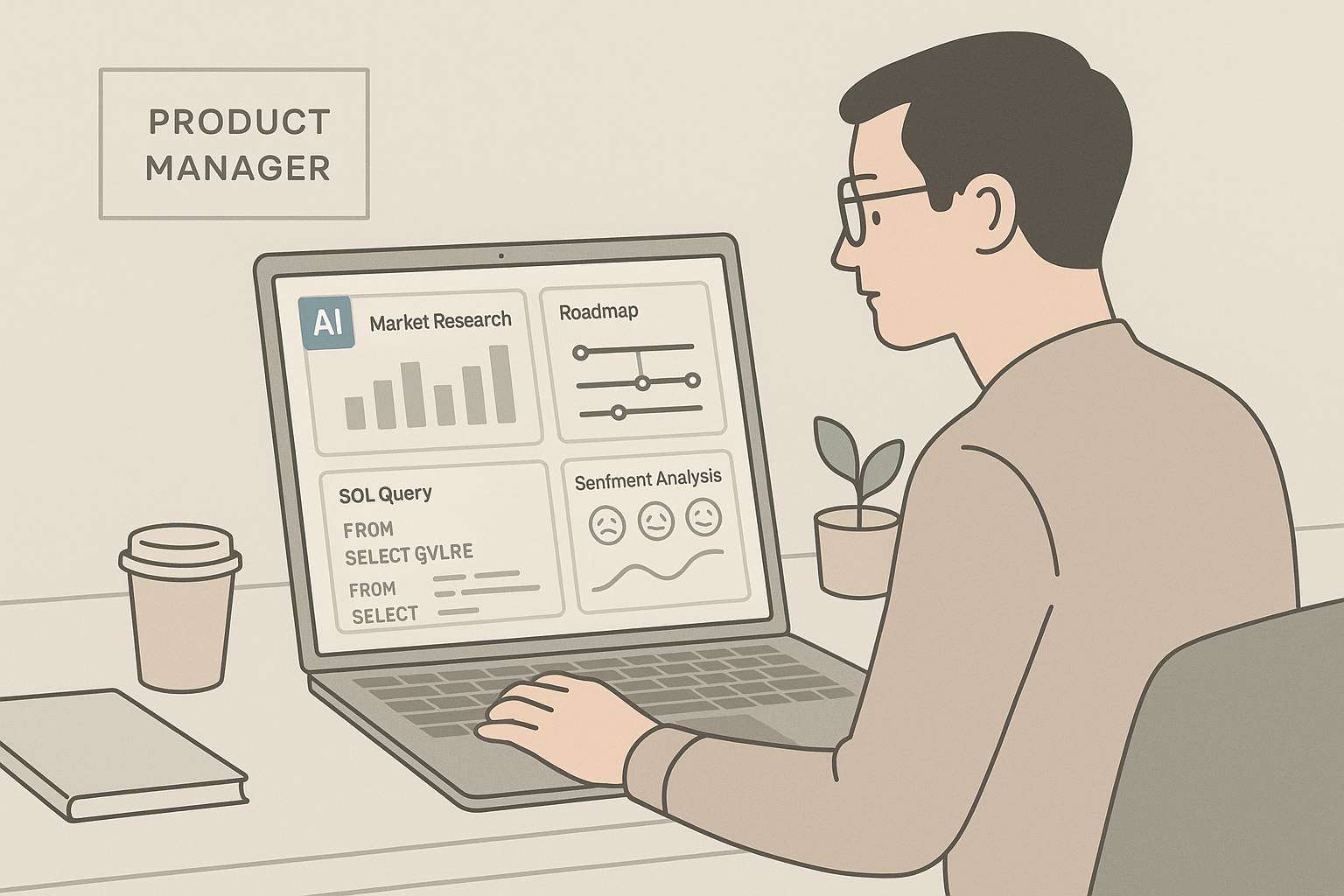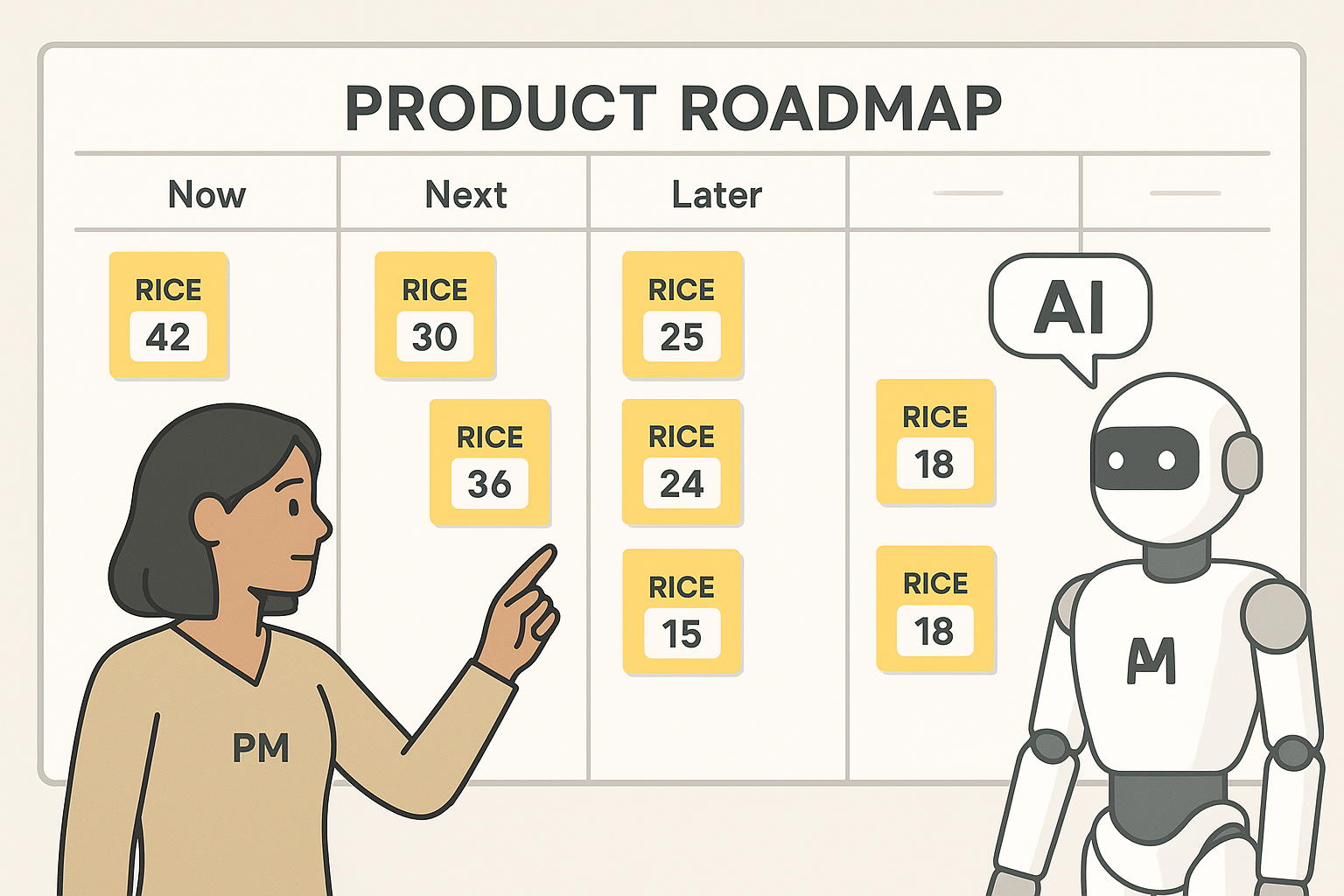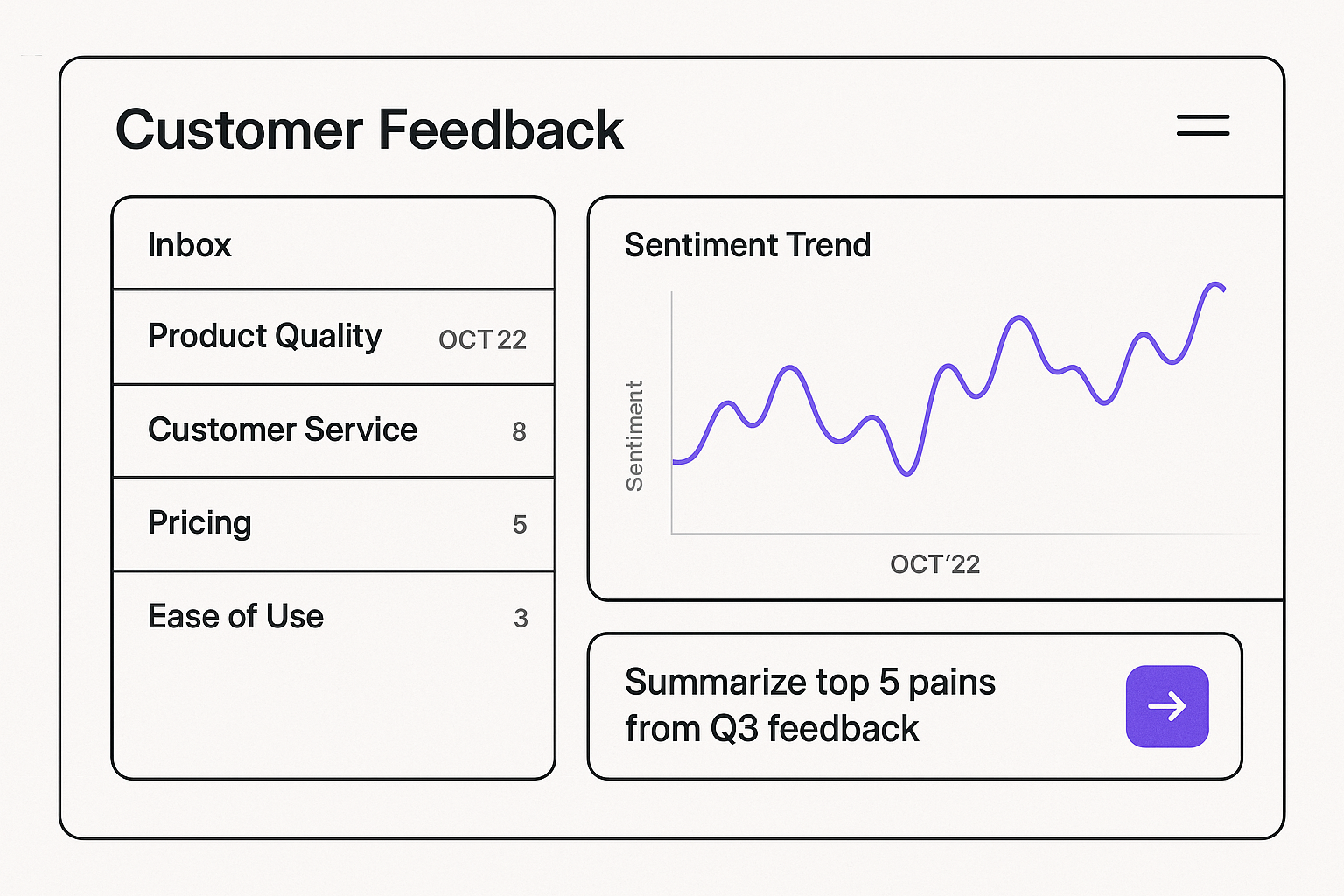# Why PMs should put ChatGPT on the team
Product managers juggle strategy, delivery, and communication. ChatGPT helps a Product Manager move faster with fewer mistakes. With the right PM prompts and simple guardrails, you can automate low‑value work, then spend your attention on product judgment where it matters.

Below is a practical playbook, not theory. We share prompts, workflows, and small choices that compound into real impact.
# Market research with ChatGPT, without the fluff
Good research is structured. ChatGPT shines when you give it scope, signals, and a clear output format.
- Set scope: market, region, ICP, and time horizon.
- Provide seeds: 3 to 5 known competitors, a pricing hint, two buyer pains.
- Ask for structure: a short brief, a table, a list of risks.
Try these PM prompts:
- "Act as a market researcher. Summarize the top 5 competitors for collaborative storytelling tools in North America. Include ICP, pricing tier, and key differentiator. Output a table and a 120 word summary."
- "Identify 3 underserved segments for SMB analytics platforms in the UK. Include segment size logic, common jobs, and two channels to reach them."
For deeper context on AI assisted research, these walkthroughs are useful: Userpilot on ChatGPT for product managers (opens new window) and Zapier on market research prompts (opens new window).
Takeaway: scope hard, ask for structure, then verify with real sources.
# From idea to PRD in hours, not weeks
A clean PRD reduces ambiguity. Use ChatGPT to draft, then tighten with your voice.
Prompt pattern:
- "Write a PRD for [product or feature]. Audience is engineering and design. Include problem, objectives, non goals, success metrics, user stories, risks, and open questions. Follow this style guide: short sentences, crisp bullets."
Example:
- "Write a PRD for contactless guest check in for mid market hotels. Include guest personas, accessibility needs, mobile key flows, offline fallback, and a phased rollout plan."
For templates and framing, see Productboard on AI for roadmap prioritization (opens new window). Let the AI draft, you provide judgment.
# User stories that developers actually use
Translate features into stories with acceptance criteria and edge cases.
Prompt:
- "Here are 7 features for our onboarding revamp: [paste]. Create user stories in the As a, I want, So that format. Add acceptance criteria, edge cases, and analytics events to track. Group into epics."
Principle: keep stories short, acceptance criteria testable, analytics explicit.
# Feature prioritization with RICE or MoSCoW
ChatGPT can score at scale, you still make the call.

Prompt:
- "Given this backlog with Reach, Impact, Confidence, and Effort estimates, compute RICE, sort descending, and flag any items with Confidence below 60 percent. Suggest one quick win and one strategic bet."
Small moves that help:
- Ask it to surface assumptions behind scores.
- Request two options, conservative and bold, then compare.
- End with a one page narrative that explains trade offs.
More ideas on structured prioritization here: Productboard on prioritization with AI (opens new window).
# SQL without the handbrake
You do not need to be a DBA to ask good questions. Use natural language, let ChatGPT draft SQL, then run it in your warehouse after a quick check.
Prompt:
- "PostgreSQL schema: orders(order_id, customer_id, total, created_at, status), customers(customer_id, plan). Show top 5 products by revenue in 2024, grouped by category, include percent of total revenue."
Follow ups to request:
- Safer filters for nulls and time zones.
- An index recommendation if the query scans the table.
Useful overviews: Graphable on ChatGPT for analytics (opens new window).
# Customer feedback analysis that scales
Your backlog should reflect real customer pain, not the loudest voice. ChatGPT can summarize themes, score sentiment, and estimate impact.

Prompt:
- "Analyze these 250 feedback entries from Q3. Group by theme, tag each with sentiment and intensity 1 to 5, and list the top 5 pains with example quotes. Propose 3 fixes that ship within 30 days."
If you want AI to do this inside your feedback system, see Sleekplan Intelligence (opens new window), which adds automated themes, sentiment, and insights over your feedback boards.
For prompt ideas, see Mouseflow on sentiment prompts (opens new window).
Principle: always keep a human in the loop. Validate insights with user calls.
# Stakeholder communication without the rewrite loop
Great PMs communicate clearly. Use AI to get to a tight first draft, then sharpen.
Prompts that save time:
- "Draft a weekly stakeholder update. Sections: highlights, risks with owners, decisions needed, next week. Keep it under 200 words, neutral tone."
- "Write a scope change note for executives. State the change, why, impact on timeline, new risk, and the decision needed by Friday."
Meeting prep:
- "Create a 45 minute agenda for a roadmap review with engineering. Include pre read, time boxes, and a decision log template."
# Operational excellence with small automations
Documentation
- "Turn these research notes into a 1 page brief. Include problem, key quotes, and the 3 sharpest insights."
Workflow
- "Map our current GTM launch process for minor features. Identify bottlenecks, propose a lighter weight path for changes that do not affect pricing or compliance."
Quality
- "Generate test scenarios for bulk import. Include normal flows, malformed files, partial failures, and data validation rules."
# Prompt patterns that consistently work
Use this six part structure. It keeps outputs usable and reviews faster.
- Task: what you want.
- Context: product, audience, constraints.
- Examples: one or two samples to mimic.
- Persona: who the AI should act as.
- Format: bullets, table, or narrative.
- Tone: short, neutral, or persuasive.
I keep a small prompt library in our team docs. We prune it monthly, like a garden.
# Guardrails, so you trust the output
- Verify facts with source links. Ask the model to cite inputs it used.
- Keep humans as final approvers for roadmap, pricing, and messaging.
- Track where AI drafts helped. Time saved on docs, faster bug triage, clearer roadmaps.
# Quick answers PMs search for
- What are the best ChatGPT prompts for PMs? Use scoped, structured prompts that ask for tables or bullets. Include audience, constraints, and acceptance criteria.
- Can ChatGPT do market research? Yes, for first pass synthesis. Cross check with reports and user interviews. See Zapier’s guide (opens new window).
- Can ChatGPT write SQL? Yes, treat it as a junior analyst. Review JOINs and filters. See Graphable’s overview (opens new window).
- How do I prioritize with AI? Feed your backlog with effort and impact, ask for RICE, then adjust with judgment. See Productboard’s approach (opens new window).
# A simple rollout plan
Week 1
- Pick two use cases, for example PRD drafts and stakeholder updates.
- Define success, such as 60 percent time saved on PRD first drafts.
Week 2
- Add feedback analysis with sentiment and themes.
- Log wins, for example bugfixes closed within 7 days after clearer triage.
Week 3
- Introduce backlog scoring with RICE, plus a monthly roadmap narrative.
- Share before and after examples in a team review.
# The principle that holds it all together
AI is leverage, not a substitute for product judgment. Use ChatGPT to clear the fog around research, writing, analysis, and planning. Then decide with clarity.